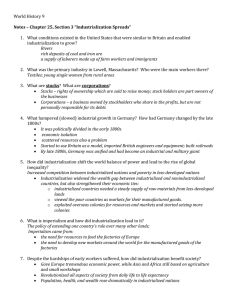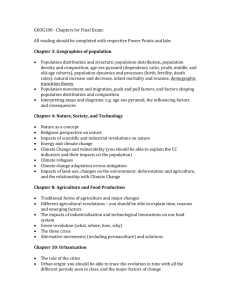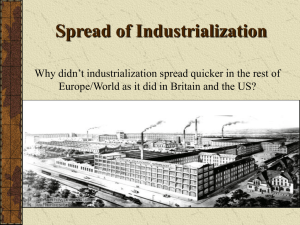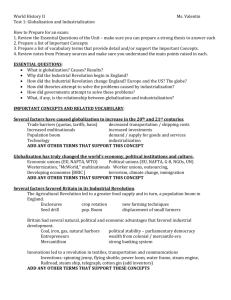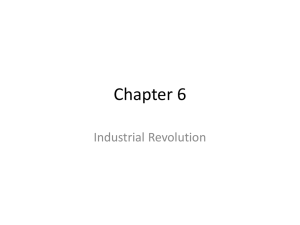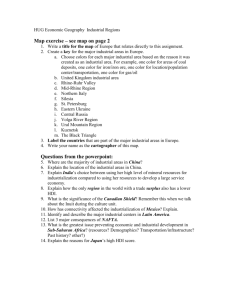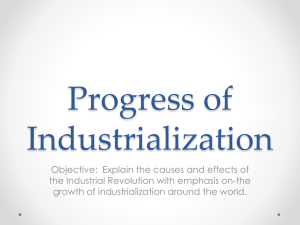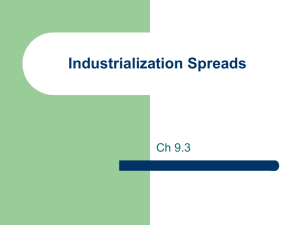Themes 1750-1914 - Mrs. Bloom Social Studies
advertisement
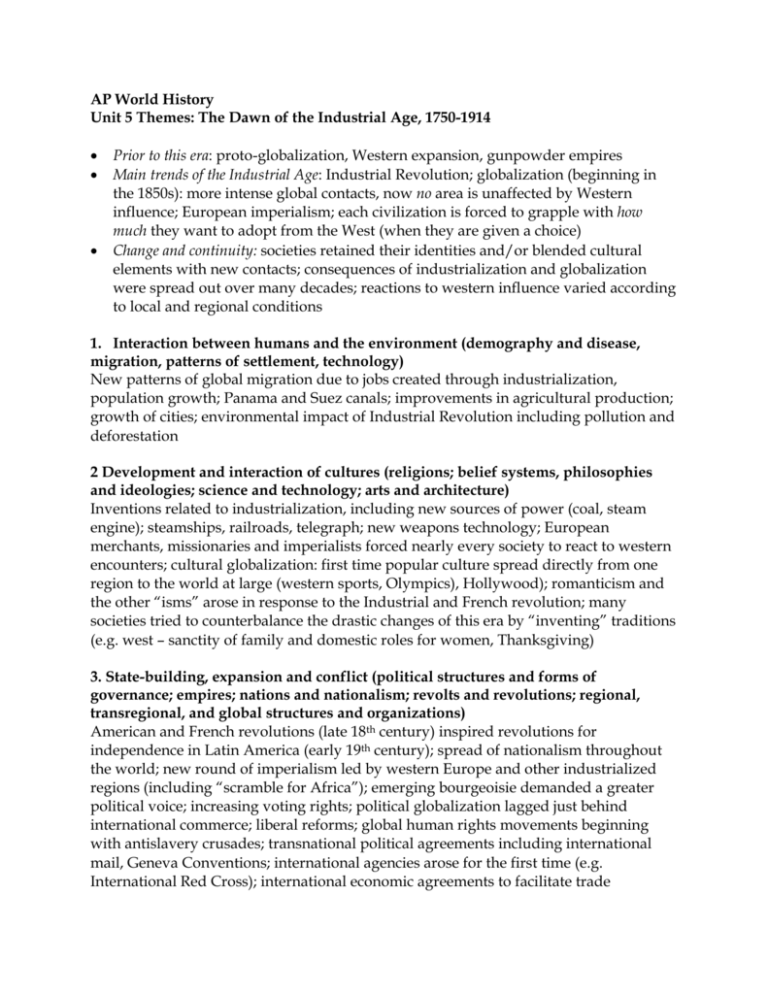
AP World History Unit 5 Themes: The Dawn of the Industrial Age, 1750-1914 Prior to this era: proto-globalization, Western expansion, gunpowder empires Main trends of the Industrial Age: Industrial Revolution; globalization (beginning in the 1850s): more intense global contacts, now no area is unaffected by Western influence; European imperialism; each civilization is forced to grapple with how much they want to adopt from the West (when they are given a choice) Change and continuity: societies retained their identities and/or blended cultural elements with new contacts; consequences of industrialization and globalization were spread out over many decades; reactions to western influence varied according to local and regional conditions 1. Interaction between humans and the environment (demography and disease, migration, patterns of settlement, technology) New patterns of global migration due to jobs created through industrialization, population growth; Panama and Suez canals; improvements in agricultural production; growth of cities; environmental impact of Industrial Revolution including pollution and deforestation 2 Development and interaction of cultures (religions; belief systems, philosophies and ideologies; science and technology; arts and architecture) Inventions related to industrialization, including new sources of power (coal, steam engine); steamships, railroads, telegraph; new weapons technology; European merchants, missionaries and imperialists forced nearly every society to react to western encounters; cultural globalization: first time popular culture spread directly from one region to the world at large (western sports, Olympics), Hollywood); romanticism and the other “isms” arose in response to the Industrial and French revolution; many societies tried to counterbalance the drastic changes of this era by “inventing” traditions (e.g. west – sanctity of family and domestic roles for women, Thanksgiving) 3. State-building, expansion and conflict (political structures and forms of governance; empires; nations and nationalism; revolts and revolutions; regional, transregional, and global structures and organizations) American and French revolutions (late 18th century) inspired revolutions for independence in Latin America (early 19th century); spread of nationalism throughout the world; new round of imperialism led by western Europe and other industrialized regions (including “scramble for Africa”); emerging bourgeoisie demanded a greater political voice; increasing voting rights; political globalization lagged just behind international commerce; liberal reforms; global human rights movements beginning with antislavery crusades; transnational political agreements including international mail, Geneva Conventions; international agencies arose for the first time (e.g. International Red Cross); international economic agreements to facilitate trade 4. Creation, expansion and interaction of economic systems (agricultural and pastoral production; trade and commerce; labor systems; industrialization; capitalism and socialism) Areas that industrialized early gained a huge economic lead as well as power advantages; spread of capitalism: European and American corporations set up operations throughout the world, factory labor, workers involved in manufacturing began to exceed agricultural work; governments encouraged industrial growth by investing in the necessary infrastructure (roads, canals, banks, etc.); Suez and Panama canals; emergence of socialism as an ideology; outside western civilization, Russia and Japan also launched industrial revolutions; other regions became economically dependent on industrialized countries through exports of cheap raw materials and food supplies; traditional manufacturing workers struggled to compete with industrialized goods; elimination of slave and serf systems was assisted by population growth that provided new sources of labor, indenture systems; growing commercial penetration of areas such as China and the Ottoman Empire 5. Development and transformation of social structures (gender roles and relations; family and kinship; racial and ethnic constructions; social and economic classes) Factory system changed many aspects of life including traditional family life, child labor in the early stages of industrialization, increase in schooling opportunities; social tensions amidst dramatic changes in this era; new forms of leisure emerged as industrialization progressed (professional sports, popular theater, vacations, professional entertainers)
